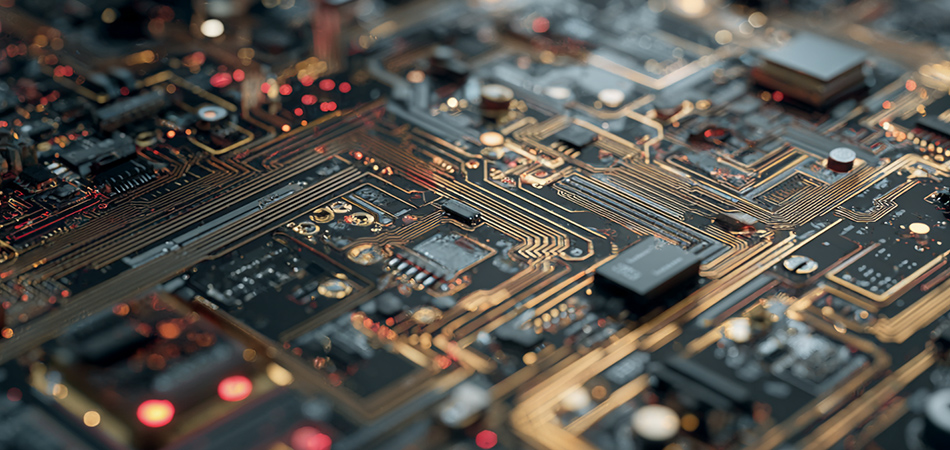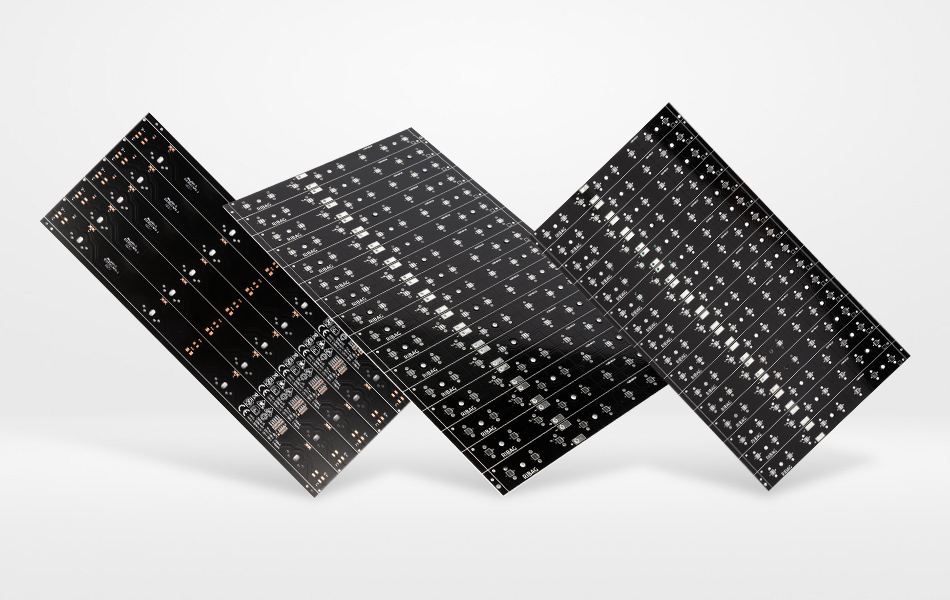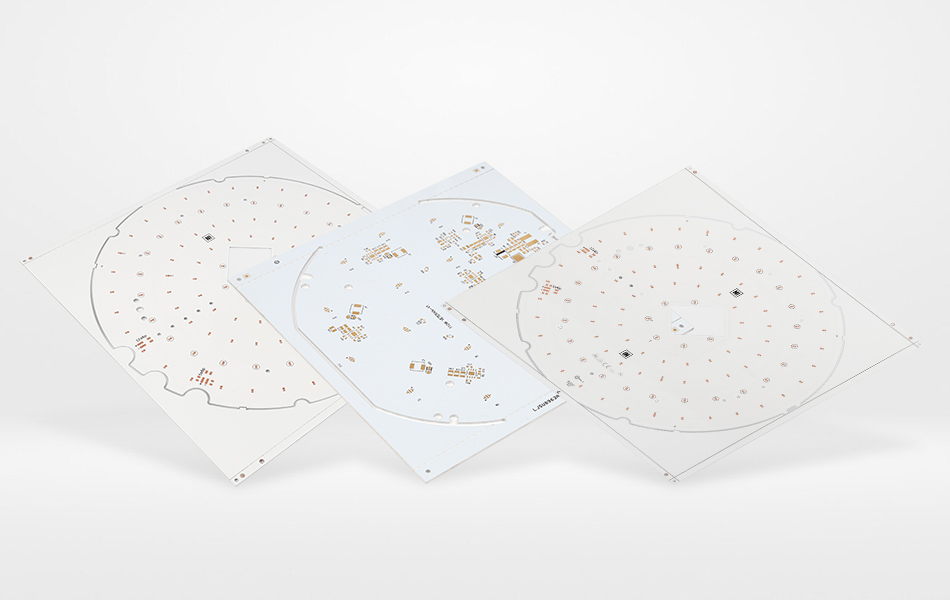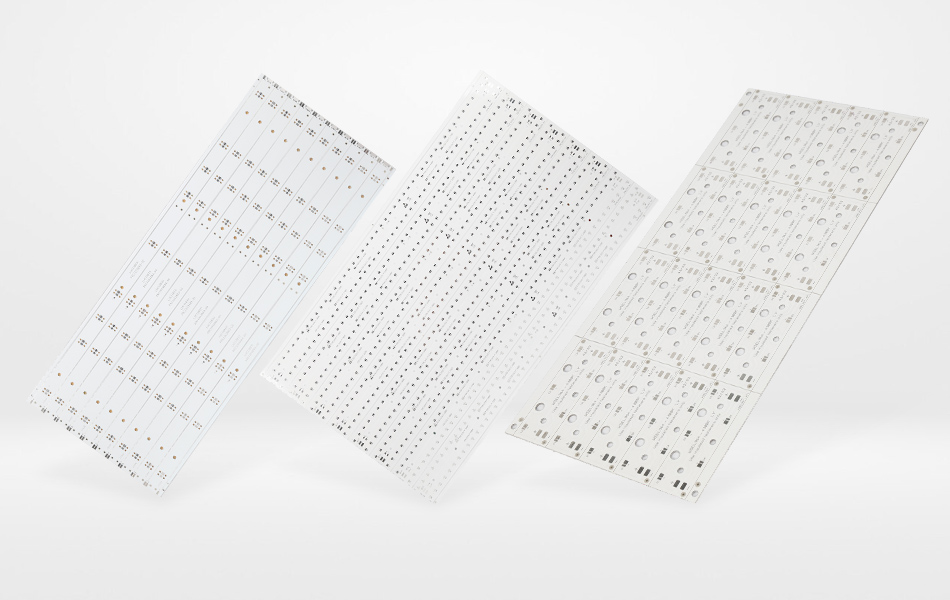-
- PCB TYPE
- PRINTED CIRCUIT BOARD PROTOTYPE ALUMINUM PRINTED CIRCUIT BOARD R&F PCB FPC HIGH FREQUENCY PCB HIGH-TG PCB HEAVY COPPER PCB HDI PCB PCB FOR LIGHTING METAL CORE PCB
time:Jun 19. 2025, 09:22:17
In the rapidly advancing realm of electronics, Printed Circuit Boards (PCBs) serve as the essential framework for countless devices. Among the diverse range of PCB materials, aluminum has emerged as a preferred choice for a multitude of applications, giving rise to Aluminum PCBs. These specialized PCBs combine the unique properties of aluminum with traditional PCB functionality, offering distinct advantages in thermal management, mechanical strength, and cost - effectiveness. As electronics continue to evolve towards smaller form factors and higher power densities, the demand for Aluminum PCBs is on the rise. This article will comprehensively explore Aluminum PCBs, covering their fundamental characteristics, design considerations, manufacturing processes, wide - ranging applications, market dynamics, and future trends.
Understanding Aluminum PCBs
Definition and Structure
An Aluminum PCB is a type of printed circuit board that utilizes an aluminum substrate as its base material, replacing the conventional non - metallic substrates commonly found in standard PCBs. The structure of an Aluminum PCB typically consists of three main layers: an aluminum core, a thermally conductive dielectric layer, and a copper layer for traces and pads.
The aluminum core forms the foundation of the PCB, providing robust mechanical support and exceptional thermal conductivity. It acts as a heat sink, effectively absorbing and dissipating heat generated by electronic components during operation. The thermally conductive dielectric layer, positioned between the aluminum core and the copper layer, serves a dual purpose. It electrically isolates the aluminum from the electrical circuits while facilitating the transfer of heat from the components to the aluminum core. Finally, the copper layer on the surface is patterned to create the necessary electrical traces and pads for component mounting and signal transmission.
Key Material Properties
High Thermal Conductivity
One of the most significant advantages of Aluminum PCBs lies in their high thermal conductivity. Aluminum is an excellent conductor of heat, which allows for rapid heat transfer away from heat - generating components such as power transistors, integrated circuits, and LEDs. By efficiently dissipating heat, Aluminum PCBs prevent thermal stress and overheating, which can lead to component failure and reduced device lifespan. This thermal management capability is crucial in applications where maintaining low operating temperatures is essential for optimal performance.
Mechanical Strength and Lightweight
Aluminum offers good mechanical strength, making Aluminum PCBs resistant to mechanical stress, vibrations, and impacts. This durability ensures that the PCBs can withstand the rigors of various environments, from the harsh conditions inside automotive engines to the vibrations experienced in aerospace applications. Additionally, aluminum is a lightweight material, which is a significant advantage in industries where reducing the weight of electronic components is a priority, such as in the aerospace and automotive sectors. The reduced weight can contribute to overall energy efficiency and improved performance of the end - products.
Electrical Insulation
Despite the presence of a conductive aluminum core, Aluminum PCBs are designed to provide reliable electrical insulation. The thermally conductive dielectric layer effectively separates the aluminum from the electrical traces, preventing electrical short - circuits. This layer is carefully selected for its high electrical resistance and thermal conductivity, striking a balance between insulating the electrical components and facilitating heat transfer. As a result, Aluminum PCBs can support a wide range of electrical applications, from low - voltage circuits to more complex high - power systems.

Design Considerations for Aluminum PCBs
Thermal Design
Component Placement
Proper component placement is crucial for effective thermal management in Aluminum PCBs. Heat - generating components should be positioned in areas that allow for easy heat transfer to the aluminum substrate. For example, they can be placed near the edges of the PCB where there is better air circulation or adjacent to heat - dissipating elements such as heat sinks. Components that are sensitive to heat should be located away from heat sources to avoid thermal stress and potential damage. Additionally, the layout should consider the symmetry of heat distribution across the PCB to prevent the formation of hotspots.
Thermal Vias and Heat Sink Integration
Thermal vias play a vital role in enhancing the heat - transfer efficiency of Aluminum PCBs. These are small holes filled with a highly conductive material that create a direct connection between the components and the aluminum substrate, enabling rapid heat transfer. The number, size, and location of thermal vias need to be carefully calculated based on the heat - generating capacity of the components. In addition, integrating heat sinks with the PCB can further improve heat dissipation. The selection of heat sinks, including their size, shape, and mounting method, should be optimized according to the specific requirements of the application to ensure maximum heat - transfer performance.
Electrical Design
Trace Routing and Impedance Control
In the electrical design of Aluminum PCBs, trace routing requires careful planning to ensure signal integrity. For high - speed signals, impedance - controlled traces are often necessary. Designers need to consider factors such as trace width, length, spacing, and the dielectric constant of the insulating layer to calculate the appropriate impedance values. The presence of the aluminum substrate can influence the electromagnetic field around the traces, so additional considerations are needed to minimize signal reflections, crosstalk, and interference. Specialized software tools are commonly used to simulate the electrical behavior of the PCB layout and optimize the trace routing.
3.2.2 Power and Ground Plane Design
Power and ground planes are essential components of the electrical design of Aluminum PCBs. The aluminum core can sometimes be utilized as a ground plane, taking advantage of its low resistance and large surface area. Well - designed power and ground planes help to distribute electrical power evenly across the PCB and provide a stable return path for electrical current. To ensure optimal performance, power and ground planes should be continuous, with minimal splits or gaps. Proper grounding techniques, such as star - grounding or 多点接地,should be employed to reduce electromagnetic interference (EMI) and improve the overall electrical performance of the PCB.

Manufacturing Processes of Aluminum PCBs
Material Selection
The manufacturing process of Aluminum PCBs begins with the careful selection of materials. High - quality aluminum sheets with consistent thickness and purity are chosen for the substrate. The aluminum should have good thermal conductivity and mechanical properties to meet the requirements of the application. The thermally conductive dielectric material is selected based on its electrical insulation properties, thermal conductivity, and adhesion to both the aluminum and the copper layers. Copper foil for the traces is also carefully selected for its conductivity and quality. All materials are inspected to ensure they meet the necessary standards before use.
Lamination
Lamination is a critical step in the manufacturing of Aluminum PCBs. In this process, the aluminum substrate, thermally conductive dielectric layer, and copper foil are bonded together. Heat and pressure are applied to cure the dielectric material, creating a strong and cohesive structure. Precise control of the lamination parameters, such as temperature, pressure, and time, is essential to ensure a uniform bond and avoid defects such as voids, delaminations, or uneven bonding. Any imperfections in the lamination can significantly impact the thermal and electrical performance of the final PCB.
Drilling and Plating
After lamination, drilling is performed to create holes for vias, component mounting, and electrical connections. High - precision drilling machines are used to ensure accurate hole placement and clean hole walls. Following drilling, the holes are plated with copper to create electrical connections between the different layers of the PCB and to provide a solderable surface for component attachment. The plating process, usually electroplating, requires careful control of parameters such as current density, plating time, and temperature to achieve a uniform and thick copper deposit.
Circuit Patterning
Circuit patterning is the process of creating the electrical circuits on the copper layer. Photolithography is a commonly used technique for this purpose. A photosensitive resist material is applied to the copper surface, and then a patterned mask is used to expose the resist to ultraviolet (UV) light. The exposed areas of the resist are chemically altered and removed during the development process, leaving the unexposed resist in the shape of the circuit pattern. The remaining copper is then etched away using an etching solution, leaving only the copper traces that form the electrical circuits.

Applications of Aluminum PCBs
LED Lighting
LED lighting is one of the most prominent application areas for Aluminum PCBs. LEDs generate a significant amount of heat during operation, and efficient heat dissipation is crucial for maintaining their luminous efficiency and lifespan. Aluminum PCBs, with their excellent thermal conductivity, are ideal for LED lighting fixtures. They can quickly absorb the heat from the LEDs and spread it out, preventing overheating. This allows for the design of more powerful and compact LED lighting products, such as streetlights, downlights, and high - bay lights. The use of Aluminum PCBs in LED lighting also contributes to energy efficiency and reduced maintenance costs.
Power Electronics
In power electronics applications, such as power supplies, inverters, and motor drives, Aluminum PCBs are widely used. These applications involve high - power components that generate a substantial amount of heat. The aluminum substrate in the PCB helps to manage this heat effectively, ensuring the stable operation of the power electronics devices. The low resistance of the copper layer also contributes to efficient power transfer, reducing power losses during conversion and distribution. Aluminum PCBs are essential for maintaining the reliability and performance of power electronics systems in various industries.
Automotive Electronics
The automotive industry has embraced Aluminum PCBs for a variety of applications. In modern vehicles, there is a growing number of electronic systems, including engine control units (ECUs), advanced driver - assistance systems (ADAS), and infotainment systems. Aluminum PCBs are used in these systems due to their ability to withstand the harsh conditions inside a vehicle, such as high temperatures, vibrations, and electromagnetic interference. Their thermal management capabilities ensure that components operate within safe temperature ranges, while their mechanical strength provides durability during vehicle operation.
Aerospace and Defense
Aerospace and defense applications often require PCBs that can perform reliably in extreme environments. Aluminum PCBs meet these requirements with their high thermal conductivity, mechanical strength, and lightweight properties. They are used in aircraft avionics systems, satellite communication equipment, and military electronics. The ability to dissipate heat effectively and withstand mechanical stress is crucial in these applications, where the failure of electronic components can have severe consequences.
Consumer Electronics
In consumer electronics, Aluminum PCBs are finding increasing use in devices such as gaming consoles, high - end laptops, and multimedia projectors. These devices often have power - hungry components that generate a significant amount of heat. Aluminum PCBs help to manage this heat, preventing performance throttling and extending the lifespan of the components. Their lightweight nature also contributes to the design of more portable and sleek consumer electronics products.

Market Dynamics of Aluminum PCBs
Market Growth
The global market for Aluminum PCBs has been experiencing steady growth in recent years. This growth is driven by several factors, including the increasing demand for energy - efficient lighting solutions, the growth of the automotive and aerospace industries, and the continuous innovation in consumer electronics. As more applications require effective thermal management and reliable electrical performance, the market for Aluminum PCBs is expected to expand further in the coming years.
Competitive Landscape
The market for Aluminum PCBs is highly competitive, with numerous manufacturers operating globally. Key players in the market include both established PCB manufacturers and emerging companies that specialize in aluminum - based PCB technologies. Competition is based on factors such as product quality, performance, cost - effectiveness, technological innovation, and customer service. Manufacturers are constantly investing in research and development to improve the performance of their PCBs, reduce production costs, and develop new manufacturing processes. They also strive to offer customized solutions to meet the specific requirements of different customers and industries.

Challenges and Future Trends
Challenges
Despite their many advantages, the Aluminum PCB industry faces several challenges. One of the main challenges is the cost. The use of high - quality aluminum and specialized manufacturing processes can result in relatively high production costs. Additionally, as electronics continue to miniaturize, the design and manufacturing of Aluminum PCBs become more complex, requiring more advanced design tools and skilled engineers. Ensuring consistent quality and reliability during mass production is also a significant challenge, as any defects in the manufacturing process can affect the performance of the final product.
Future Trends
The future of Aluminum PCBs looks promising, with several trends likely to shape the industry. Advancements in materials science are expected to lead to the development of new aluminum alloys and composite materials with even better thermal and mechanical properties. These new materials may offer improved performance at a lower cost, making Aluminum PCBs more competitive in the market. The integration of emerging technologies, such as 5G, the Internet of Things (IoT), and artificial intelligence (AI), will drive the demand for more intelligent and connected electronic devices, increasing the need for Aluminum PCBs that can support high - speed data transfer, efficient power management, and effective thermal management.
The adoption of advanced manufacturing technologies, such as additive manufacturing and automation, is also expected to revolutionize the production of Aluminum PCBs. Additive manufacturing could enable more complex and customized designs, while automation will improve production efficiency, reduce costs, and enhance quality control. Moreover, the growing focus on environmental sustainability may lead to the development of more eco - friendly manufacturing processes and materials for Aluminum PCBs.
Conclusion
Aluminum PCBs have emerged as a versatile and essential solution in the modern electronics industry. Their unique combination of high thermal conductivity, mechanical strength, and electrical insulation makes them suitable for a wide range of applications, from LED lighting and power electronics to automotive, aerospace, and consumer electronics. While the industry faces challenges related to cost and manufacturing complexity, ongoing advancements in materials, manufacturing technologies, and emerging trends offer great opportunities for growth and innovation. As the electronics industry continues to evolve, Aluminum PCBs will undoubtedly play an increasingly important role in enabling the development of more efficient, reliable, and high - performance electronic devices.

Got project ready to assembly? Contact us: info@apollopcb.com



We're not around but we still want to hear from you! Leave us a note:

Leave Message to APOLLOPCB
